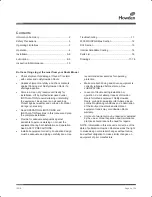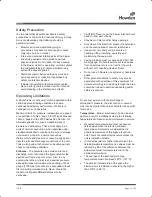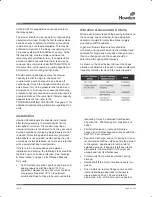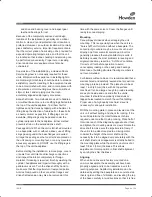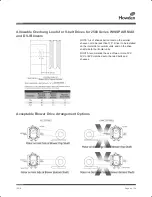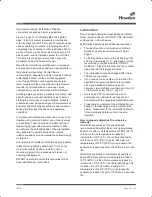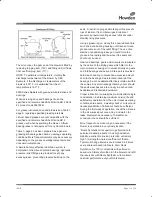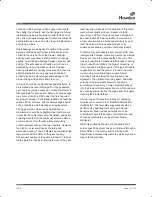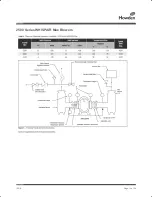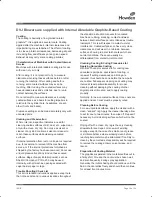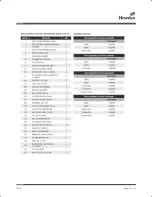
ISRB
2005 GEA 20260
Page 11 of 24
The oil sump on the gear end of the blower is filled by
removing top plug Item (140), and filling until oil flows
from overflow plug, Item (111).
NOTE: To estimate oil temperature, multiply the
discharge temperature of the blower by 0.80.
Example: if the discharge air temperature of the
blower is 200° F, it is estimated that the oil
temperature is 160° F
2500 Series blowers with grease lubricated drive end
bearings.
When servicing drive end bearings of use the
specified and recommended Shell Darina SD 2 NLGI
#2 product code 506762B.
For grease lubricated drive end blowers see Table 1,
page 9, regarding specified greasing intervals.
Lithium based greases are not compatible with the
specified and recommended Shell Darina SD 2
grease used when assembling the blower. Lithium
based grease is not approved for any Roots blowers.
Table 3, page 9 has been prepared as a general
greasing schedule guide based on average operating
conditions. More frequent intervals may be necessary
depending on the grease operating temperature and
unusual circumstances.
A simple but very effective lubrication system is
employed on the drive shaft end bearings. Hydraulic
pressure relief fittings are provided to vent any
excess grease, preventing pressure build-up on the
seals. A restriction plug and metering orifice prevent
loss of lubricant from initial surges in lubricant
pressure but permit venting excess lubricant under
steadily rising pressures.
Using a pressure gun, slowly force new lubricant into
each drive end bearing housing until traces of clean
grease comes out of the relief fitting. The use of an
electric or pneumatic grease gun could force the
grease in too rapidly and thus invert the seals and
should not be used.
Gear end bearings, gears and oil seals are lubricated
by the action of the timing gears which dip into the
main oil sumps causing oil to splash directly on gears
and into bearings and seals. A drain port is provided
below each bearing to prevent an excessive amount
of oil in the bearings. Seals located inboard of the
bearings in each headplate effectively retain oil within
the sumps. Any small leakage that may occur should
the seals wear passes into a cavity in each vented
headplate and is drained downward.
Proper lubrication is usually the most important single
consideration in obtaining maximum service life and
satisfactory operation from the unit. Unless operating
conditions are severe, a weekly check of oil level and
necessary addition of lubricant should be sufficient.
During the first week of operation, check the oil levels
in the oil sumps about once a day, and watch for
leaks. Replenish as necessary. Thereafter, an
occasional check should be sufficient.
More frequent oil service may be necessary if the
blower is operated in a very dusty location.
*Roots Synthetic oil is superior in performance to
petroleum based products. It has high oxidation
stability, excellent corrosion protection, extremely
high fi lm strength and low coefficient of friction.
Typical oil change intervals are increased 2-3 times
over petroleum based lubricants. Also, Roots
Synthetic oil is 100% compatible with petroleum
based oils. Simply drain the oil in the blower and refill
the reservoirs with Roots Synthetic oil to maintain
optimum performance of your Roots blower.
ISRB 2005 GEA 20260.indd 11
17/09/2015 12:53
Summary of Contents for Roots 2500 Series WHISPAIR MAX
Page 14: ...ISRB 2005 GEA 20260 Page 14 of 24 Troubleshooting Checklist...
Page 15: ...ISRB 2005 GEA 20260 Page 15 of 24 2500 Series WHISPAIR Max Blowers...
Page 20: ...ISRB 2005 GEA 20260 Page 20 of 24...
Page 21: ...ISRB 2005 GEA 20260 Page 21 of 24 Assembly of 2500 Series WHISPAIR Max Blower...
Page 22: ...ISRB 2005 GEA 20260 Page 22 of 24 Assembly of 2500 Series DVJ Blower...


